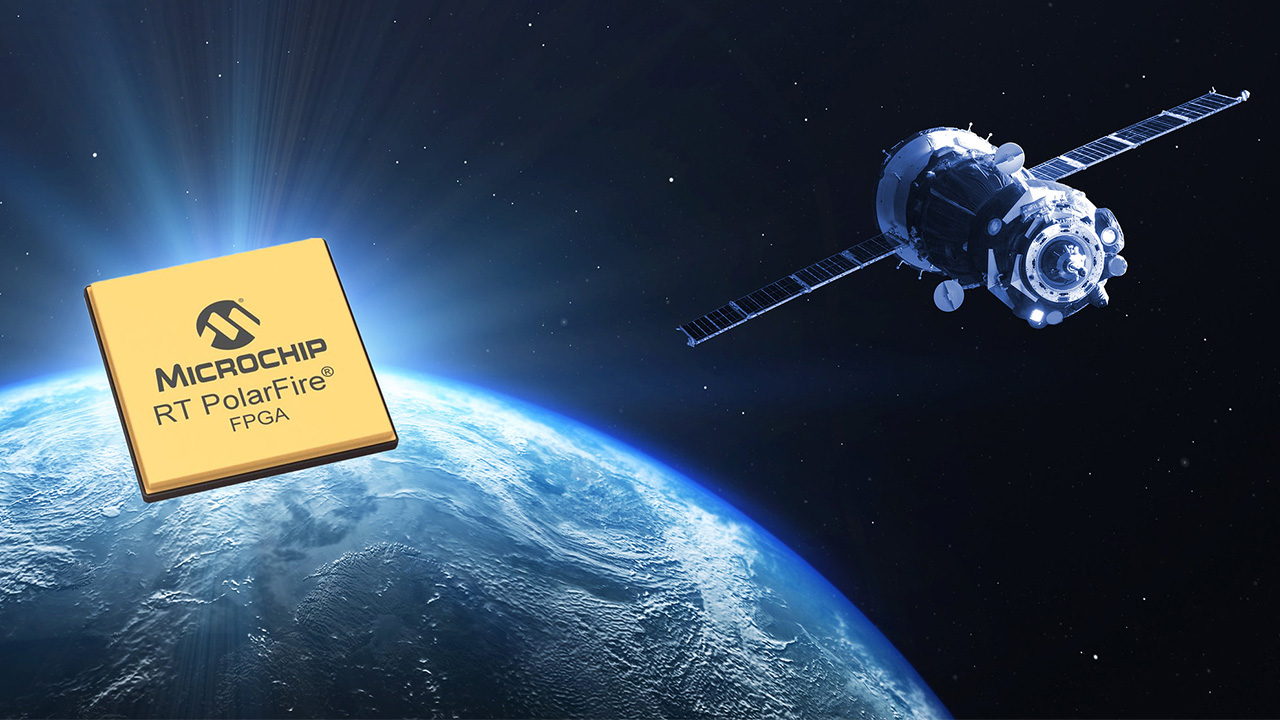NASA Aims For 100x Speedup With Next Space Computer
Chips in space, now 100 times more powerful
A $50 million contract for a next-generation processor for use in space has been awarded to Microchip Technology Inc. of Chandler, Arizona. The firm, which makes embedded microcontrollers and Arm-based 32bit systems, will design and deliver the HPSC (High-Performance Spaceflight Computing) processor over three years.
The new processor is expected to provide at least 100 times the computational capacity of current spaceflight computers. While this may sound like a boast, the current state of space computing means it’s definitely not out of reach. NASA’s Orion reusable capsule uses a Honeywell flight computer originally built for use in Boeing 787 airliners — a system that was 12 years old at the time of its launch in 2014. The point of spaceflight computers is not that they are particularly fast, but that they are reliable and fault-tolerant.
The Hubble space Telescope’s original DF-224 computer, built in the 1980s, was a triple-CPU design 18in square that weighed 110lbs. It was augmented with a 16MHz Intel 386 in 1993, and the whole thing was replaced by a single 25MHz Intel 486 in 2000, while the world was being wowed by the Pentium 4. The Mars rovers, by contrast, carry IBM processors not dissimilar to the Apple G3 (though nobody ever radiation-hardened a Powerbook).
“Our current spaceflight computers were developed almost 30 years ago,” said Wesley Powell, NASA’s principal technologist for advanced avionics. “While they have served past missions well, future NASA missions demand significantly increased onboard computing capabilities and reliability. The new computing processor will provide the advances required in performance, fault tolerance, and flexibility to meet these future mission needs.”

It might not be a big name in the processor world right now, but Microchip Technology has expertise that could come in useful in the hostile environment of outer space. Its PolarFire FPGA (field-programmable gate array) is radiation tolerant, and recently achieved MIL-STD-883 Class B certification, a battery of environmental, mechanical and electrical tests that act as a stepping stone toward the certifications necessary for use in space.
Founded in 1989, the company was once the microelectronics division of General Instrument, but was spun off and went public in 1993. Along the way it has acquired many other companies, including Microsemi, an aerospace and defense semiconductor manufacturer, and New Zealand’s Tekron International, which makes precision timing and GPS devices.
Microchip will be contributing significant R&D to the deal. “We are pleased that NASA selected Microchip as its partner to develop the next-generation space-qualified compute processor platform,” said Babak Samimi, corporate vice president for Microchip’s communications business unit.
Get Tom's Hardware's best news and in-depth reviews, straight to your inbox.
“We are making a joint investment with NASA on a new trusted and transformative compute platform. It will deliver comprehensive Ethernet networking, advanced artificial intelligence/machine learning processing and connectivity support while offering unprecedented performance gain, fault-tolerance, and security architecture at low power consumption. We will foster an industry-wide ecosystem of single board computer partners anchored on the HPSC processor and Microchip’s complementary space-qualified total system solutions to benefit a new generation of mission-critical edge compute designs optimized for size, weight, and power.”

Ian Evenden is a UK-based news writer for Tom’s Hardware US. He’ll write about anything, but stories about Raspberry Pi and DIY robots seem to find their way to him.
-
Geef Save some money, shoot a crate of 100 of those little mini PCs off Amazon connected to a big router. A few break down? Oh well. Wait nm they still use quite a bit of power.Reply -
DougMcC ReplyGeef said:Save some money, shoot a crate of 100 of those little mini PCs off Amazon connected to a big router. A few break down? Oh well. Wait nm they still use quite a bit of power.
Funny. But i'm sure you understand that the reality is not that a few of them break down, but that 100% of them fail usually within seconds when the cold cracks the substrate. -
TheOtherOne I am just waiting for Weta Digital (or any other CGI studio) to work on a "live" broadcast of Mars Landing in near future!Reply
Just imagine what they can do with the tech they have now, compared to what they did back in 60s :mdr: -
bit_user Reply
It's not about breaking, but being incredibly fault-tolerant. I think I heard about satellite CPUs using something crazy like 4 bits of parity/ECC per 8 bits of data. That's because they need to withstand being showered with radiation, during events like solar storms.Geef said:Save some money, shoot a crate of 100 of those little mini PCs off Amazon connected to a big router. A few break down? Oh well. Wait nm they still use quite a bit of power.
A former boss of mine worked once told me about a CPU he worked on at an unnamed government research lab that would produce deterministic results in non-deterministic time, back in the 1990's. All of the intermediate results were error-checked, and computations would be repeated until they were error-free.
Anyway, this thing almost certainly has to work on interplanetary probes and on Mars, which means no Van Allen Belt to provide any shielding from solar and cosmic radiation. -
bit_user Reply
Where did it say they would use TSMC 3 nm? I doubt it'll be smaller than 45 nm, but certainly not 3 nm.magbarn said:Wouldn't a 1 micrometer 486 be much more radiation resistant than a 3nm TSMC CPU?
Interestingly, the Mars Ingenuity helicopter uses an off-the-shelf Snapdragon 801 SoC (28 nm). I wonder how much radiation shielding it has, and how often they have to reset it. Anyway, Ingenuity was only created as an experiment, to test out the concept. It could use a commodity CPU because it wasn't central to the mission.
By contrast, the Perseverance rover has a 133 MHz PowerPC CPU made at somewhere between 250 and 150 nm. If its CPU failed, that would mean leave its mission incomplete, if not an outright failure. -
bit_user Reply
They don't really need to, because we have footage from some Go Pro cameras that were on board. You can watch a whole movie of the descent.TheOtherOne said:I am just waiting for Weta Digital (or any other CGI studio) to work on a "live" broadcast of Mars Landing in near future!
I must say: it was pretty disappointing to watch the livestream of the landing and get only the telemetry. Makes sense, but still anticlimactic.